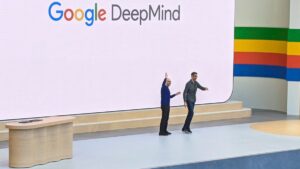Google DeepMind Advocates for Adoption of ‘Matryoshka’ Model to Enhance Data Centre Energy Efficiency

Innovations in AI: Google DeepMind’s Matryoshka Model
Understanding the Matryoshka Model
Manish Gupta, the Senior Director at Google DeepMind, has introduced a new approach to managing the energy consumption of data centers when deploying generative AI technologies. The model, known as the "Matryoshka model," draws its name from the traditional Russian dolls that fit one inside the other. This innovative structure allows for a unique hierarchy of AI models, optimizing both energy efficiency and computational resources.
In essence, the Matryoshka model involves embedding smaller AI systems within a larger model. This architecture plays a crucial role in addressing the rising energy demands associated with generative AI applications. As the use of advanced AI technologies expands, many companies have turned to significant energy sources, including nuclear power, to meet their requirements. However, the goal of Google DeepMind is to create solutions that help reduce this energy usage.
How the Model Works
The functionality of the Matryoshka model is straightforward yet effective. It enables the allocation of tasks based on their complexity. Here’s how it operates:
- Complex Tasks: These are directed to the largest AI model, which can perform sophisticated computations.
- Moderate Queries: These tasks are handled by an intermediate-sized model, designed for measures that require moderate processing power.
- Simple Queries: Basic inquiries are processed by the smallest model, which operates efficiently with lower energy consumption.
By implementing this tiered approach, Google DeepMind can significantly save on both energy use and computational costs, making AI applications more sustainable.
Addressing Language Gaps in AI
During his discussion at the Mumbai Tech Week event, Gupta highlighted a critical challenge in the realm of AI inclusivity—language representation. He pointed out that while Hindi is spoken by approximately 10% of the global population, only about 0.1% of online content is available in Hindi. This disparity is reflected across many Indian languages, which are underrepresented on the web despite being spoken by millions.
Gupta emphasized the need to bridge this language gap. Google DeepMind has developed models that cover 29 Indian languages, yet there remains a significant difference in capabilities when compared to their English counterparts. He expressed a strong commitment to enhance these models, stating that his ambition is to make AI performance in Hindi excel even beyond that of English. For now, the focus is on ensuring that Hindi AI applications perform at levels comparable to those available in English.
The Future of AI and Energy Conservation
As technology continues to evolve, balancing the powerful capabilities of AI with environmental responsibility becomes increasingly crucial. The Matryoshka model offers an innovative pathway to achieve this balance, optimizing energy use in data centers without compromising efficiency.
The ongoing efforts by Google DeepMind signify a larger trend in the tech industry aimed at sustainability. As companies continue to refine AI technologies and adapt to the growing demand, solutions like the Matryoshka model can play an essential role in ensuring that the digital future remains both smart and sustainable.





